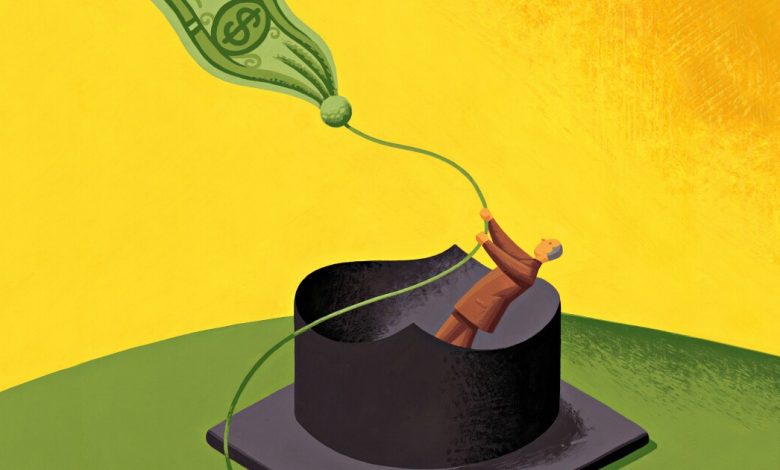Williams College Announces ‘All Grant’ Financial-Aid Policy

[ad_1]
Williams College on Wednesday announced plans to adopt an “all grant” financial-aid program, apparently the first of its kind. Starting this fall, the institution will eliminate loans, as well as campus-job and summer-earnings requirements, from all aid packages, replacing them fully with grants.
Maud S. Mandel, president of Williams, said in an interview that the new policy — which will apply to current and incoming students — would bring the college closer to its goal of “true affordability” for all those receiving aid. The initiative, she hopes, will ease the burden students often feel when balancing work with their studies and other commitments, all the while worrying about post-graduation debt.
Previously, only students from families earning less than $75,000 a year received financial-aid packages without loans at Williams. Most students on aid have on-campus jobs, typically working six to eight hours a week as part of their aid package. And Williams previously required aid recipients to contribute about $1,550, on average, of their summer earnings each year to help cover the cost of attendance (a policy the college announced last fall that it would eliminate).
Though Elizabeth Creighton, dean of admission and financial services at Williams, said some aid recipients at Williams would choose to continue working, “this is time that is freed up for students to use on other experiences.”
Williams’s new initiative is a variation on a theme within the rarefied ranks of wealthy, big-name colleges. More than 20 years ago, Princeton University became the first institution to adopt a “no loan” program, replacing funds families previously had to borrow with grants, which don’t need to be repaid. Since then, Amherst College, Harvard University, and a handful of other highly selective campuses have followed suit. Last fall, Smith College announced that it would replace all loans with grants, the first women’s college to do so.
All told, more than 75 public and private colleges have nixed loans either for all students, or for those from families below various income thresholds. Recently, Ohio State University announced an ambitious plan to raise $800 million over the next decade so that all students can graduate “without the burden of student loans.” That’s an expensive proposition, at any scale.
Williams, a liberal-arts college with about 2,000 students, has been down the no-loan road before. The institution nixed loans from its aid packages back in 2008, around the same time that several other private colleges, buoyed by growing endowments, did the same.
But soon thereafter, the economy crumbled and college endowments plummeted. Next came many reminders that colleges’ commitments to affordability can wax and wane as markets shift. In 2010, Williams’s then-interim president announced that the college was ending its no-loan policy, writing that the college was “in a strong financial situation by virtually any comparison — except with that of the Williams of three years ago.”
The Williams of today is in an enviable financial position. In fiscal-year 2021, which ended last June, the college saw its endowment grow from $2.8 billion to $4.2 billion (“an extraordinary year,” its most recent annual investment report says). That will help support new policies that the college says will help all students (about 53 percent of all undergraduates) receiving aid. Also, the college said it adjusted its financial-aid methodology last year in a way that reduced some families’ contributions by $4,500.
It’s a fact — Williams operates in a sphere that most colleges don’t. In 2022-23, the college will charge $77,300 for tuition, room and board, and fees, but its average aid package will push $70,000 a year. According to the college’s estimates, the average middle-income student will receive about $35,000 more in aid over four years as a result of its new policies, and the average low-income student (whose aid packages were already loan free) will receive nearly $16,000 in additional grants. In total, the college said, it would increase its financial-aid budget by $6.75 million annually, to $77.5 million a year.
As in any discussion of financial-aid policies, it’s important to keep some caveats in mind. For one thing, a college’s no-loan policy doesn’t mean that a given student and their parents won’t have to borrow money to make that particular college affordable for them. A family’s expected contribution, as determined by a financial-aid formula, might exceed what they can really pay in a real life.
At Princeton, nearly one in five recent graduates borrowed money, graduating with $9,400 in debt, according to the university, well below the national average of about $30,000. At Williams, the average debt at graduation for the Class of 2021 at was $12,300.
So-called elite colleges can be many things at once. Generous, sure. But also exclusive beyond words. Williams received more than 15,000 applications — for about 550 spots. Those are tough odds for anyone hoping to enjoy the fruits of the college’s new financial-aid policies.
A financial-aid policy can be many things at once, too. A good-hearted attempt to lighten students’ loads — and an assertive strategy for competing with rival institutions for desirable applicants. Especially those in the vast middle between very low- and high-income students.
Though about one in five students at Williams receives a federal Pell Grant, nearly half of all students receive no financial aid from the college. A 2017 analysis by The New York Times found that the median family income of a student attending Williams was $185,800.
Thirty-seven percent of students at the college are minorities. But in fall of 2021, just 99 of 2,166 — 4.5 percent — of all undergraduates identified as Black (143 identified as two or more races, non-Hispanic), according to the college’s Common Data Set.
Mandel, who has been Williams’s president since 2018, said that increasing student diversity, by many measures, is a high priority for the college — and that the new financial-aid program will help it do just that: “In talking to students for many years now, what I hear about often is the tremendous pressure that college can place on individuals and their families as they try to navigate not only all the learning and all the activities they want to do, but also the burden that comes from having to work jobs to pay to have access to all those opportunities.”
And that reminds us of an important fact: A financial-aid package that merely enables you to enroll is one thing. A financial-aid package that allows you to fully benefit from a college’s opportunities is another.
[ad_2]
Source link






